Dejected Essendon players leave the field after beating thrashed by 70 points against GWS last Sunday. Photo: AFL MEDIA
Plenty of AFL teams have received a rude wake-up call by means of a thrashing to start a new season. But not many in recent times have received a jolt as savage as Essendon suffered in Sydney on Sunday.
North Melbourne’s 82-point defeat at the hands of Fremantle in Perth was heavier. But the Roos, whilst expected to improve in 2019, don’t have the same level of pressure to deliver as do the Bombers this year.
Essendon’s 70-point pummelling against Greater Western Sydney was in a different category altogether.
This is a team widely tipped to challenge for a top four spot. One, which via its upbeat finish to last season and the recruitment of Giants star Dylan Shiel, was believed to have all the necessary parts in place for a concerted tilt at something substantial.
Those predictions didn’t necessarily have to be met with a first-up win. But they did require some sort of indication that the Bombers meant business. Instead, in the immediate aftermath, it was difficult to find even one positive from the wreckage.
Just three goals in three quarters of football played in decent conditions. Two runs of five unanswered goals conceded to the opposition. And a couple of other statistics perhaps even more damning.
Essendon’s improvement over the last two-thirds of 2018 was due in no small part to a better defensive work ethic.
After losing six of their first eight games last year, the Bombers rediscovered their zest off the back of their commitment to the contest. From the depths of the rankings in either category, they finished the season sixth on the contested possession differentials and second for tackles.
And really, those numbers against the Giants on Sunday said it all. Despite conceding 60-odd more disposals to GWS, they were still nonetheless out-tackled by the Giants. As for contested ball, well, that will be the number over which John Worsfold and his coaching crew will have their biggest concerns.
The Giants finished the afternoon with 41 more contested possessions than Essendon, a staggering discrepancy between two teams widely viewed as being around the same mark.
That number was the worst result under Worsfold’s coaching, worse even than 2016, when with most of their best players suspended after the drug saga, the Dons were fielding a severely weakened team.
That, mind you against a side which was missing two of its best midfielders and two of their best contested ball winners in skipper Callan Ward and Josh Kelly.
Three Giants mids – Jacob Hopper, Tim Taranto and Stephen Coniglio – won just on 40 contested possessions as a trio. Shiel was Essendon’s best with 18. No other Bomber even broke double figures on the contested ball count. Three of their leading on-ballers – Zach Merrett, David Myers and Kyle Langford – mustered just 15 collectively.
Those are the bald numbers. What will have disturbed a now long-suffering fan base more, however, was the general air of lethargy which seemed to linger over a group which was supposed to be issuing a statement of intent.
And particularly following an off-season in which Essendon hasn’t shied away from embracing the increased expectations.
Any lingering impact on the club post the drug saga has been dispelled. Of those suspended by drugs in sport authorities, only six remain. Shiel’s recruitment has followed that of three other well-credentialed pick-ups in Devon Smith, Jake Stringer and Adam Saad, all of whom delivered performances for which the Dons had hoped last year.
The noise coming from “The Hangar” over summer was boisterous and confident. Even a couple of lack-lustre performances against Carlton and Geelong in the JLT pre-season series didn’t quell the belief, supporters reassuring themselves that they were times for experimentation and avoiding injury rather than putting a best foot forward.
Now that crutch has been removed, there really are no excuses. And why, when Sunday’s shellacking was finally at an end, the Essendon fan base on social media was one angry lot indeed. And what has angered the red-and-black hordes most is the sense of déjà vu.
Essendon has ritually over the last decade been seen as a club which talks big but too often doesn’t deliver. Never more so than only 12 months ago, when after a 2017 finals appearance, it could win just two of its first eight games, the situation so dire by then it led to the removal of an assistant coach in Mark Neeld.
The Dons won 10 of their last 14 games, but after the miserable start were simply left with too much ground to make up. That backdrop demanded that this year’s version came out all guns blazing. Given that context, this 70-point belting, Essendon’s heaviest round one defeat for 15 years, was about as bad as it gets.
As much of the football world knows, and takes delight in reciting, that’s the same time it’s been since the Bombers last won a final. As for premierships, well, it’s now 19 years since Essendon’s last flag. And that equals the longest drought in the club’s entire history.
More sobering facts for a one-time giant of the competition to ponder. Off-field, Essendon remains a power, and its relative lack of success hasn’t stopped more than 70,000 people from signing on as members.
But it’s fair to say their patience is wearing thin. And from that perspective, Sunday’s abysmal effort couldn’t have been more poorly-timed. It’s also suddenly made the stakes on Saturday against St Kilda, a team roundly tipped to struggle this season, enormous. Lose that one and angry supporters might be the least of Essendon’s problems.
*This article first appeared at SPORTING NEWS.

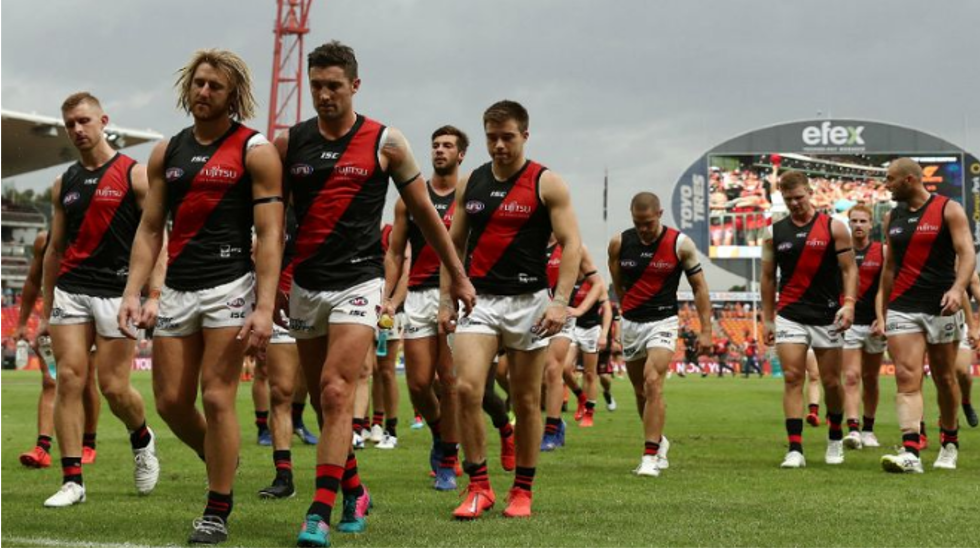
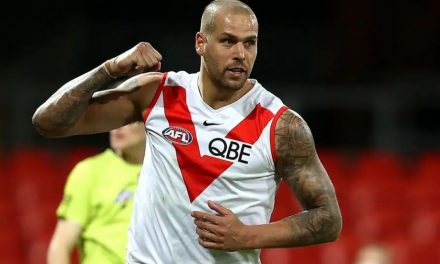
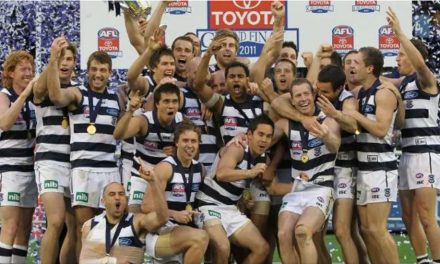
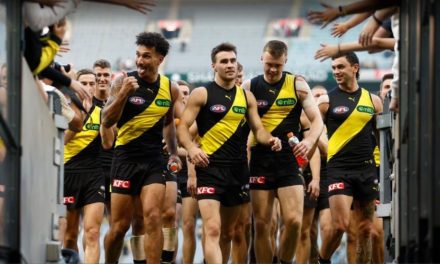
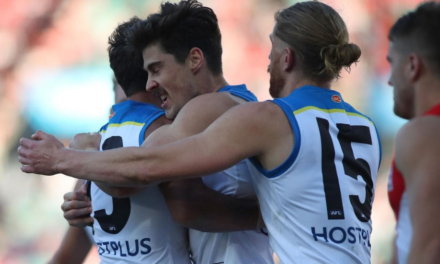






You’ve done well, Rohan… if I was trying to write about this I’d struggle to know where to start.
I was troubled by the JLT games precisely because I saw no difference between that version of the side and the one that started last season (or most of the last 15 seasons).
It’s a pattern that keeps repeating and I don’t understand how it is not addressed. Boiled down the to the following elements:
> lack of care for the receiving player (kicking to 2-on-1s, not to receiver’s advantage) – almost like they’re happy to get rid of the ball and what happens next is irrelevant.
> lack of a plan B when one approach isn’t working (is this a lack of on-field leadership?), like bombed kicks into the forward line without a target.
> too many players going up for marks with none staying down
> over-reliance on individual brilliance to achieve results rather than teamwork
> over-handling the ball
> not fighting it out, inability to prevent runs of goals.
To me, those have been themes for over a decade that seemed to be finally (at least partially) addressed in the second half of 2018, but despite months of preparation and an apparent change in approach they’re back to where they started.
The positive feelings about the Bombers coming into this season appeared justified, but I was unsure because of these systemic weaknesses.
I don’t understand how these same problems continue despite changes of coaches and playing personnel – except that it appears cultural. Oh how I wish my team was as trustworthy as the Swans, inventive as the Hawks or as hard-working as the Cats.